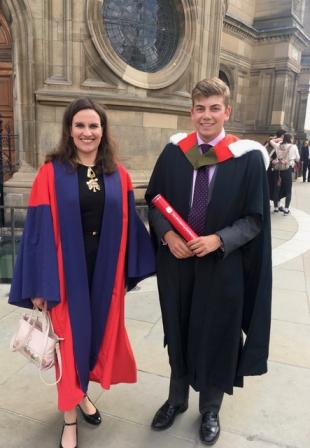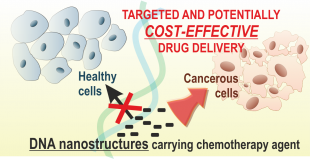Post date:
Such ‘targeted drug delivery’ could potentially be performed using nanorobots that have been designed to recognize cancerous cells and release the drug only in their presence, without affecting healthy cells. Not only could this approach help cancer patients, but it could also be financially beneficial to organizations investing in its development.
Nanorobots can be made of inorganic materials, but many scientists are taking inspiration from nature and seeking to re-engineer biological materials to build customized drug delivery vehicles.
For instance, in living things, DNA stores the genetic information that forms the blueprint of the organism, but it is possible to use synthetic DNA for a completely different purpose, as a nanoscale engineering material. Researchers can make nanostructures using DNA molecules that they have designed from scratch to assemble into a particular configuration.
Preliminary experiments have already demonstrated that DNA nanorobots loaded with chemotherapy agents have the potential to kill cancer cells in the laboratory, but human trials of the technology are some way off. If this is to become a successful cancer therapy, it will be necessary for major pharmaceutical companies to get on board. This is unlikely to happen unless there are grounds to believe that the approach will be cost-effective and profitable.
To date, the scientific community has given very little consideration to the economics of this technology. Now, Edward Coleridge and Dr Katherine Dunn, of the School of Engineering at the University of Edinburgh, have carried out a detailed analysis of the economics of DNA nanostructure-based drug delivery.
In a paper published today in the Institute of Physics journal Biomedical Physics and Engineering Express, they present a unique mathematical model that they have developed to explore the cost-effectiveness of this technology. Coleridge & Dunn were able to obtain unprecedented insight into the financial feasibility of this possible therapy and they have concluded that it is potentially feasible for DNA nanostructure-enabled drug delivery to be more cost-effective than the drug-only approach.
Their result suggests that this technology could be profitable for the pharmaceutical company that develops it. Additionally, their approach could be adapted to assess long-term financial viability of other early stage technologies.
Dr Katherine Dunn is a Lecturer in the School of Engineering; Edward Coleridge worked with her on this project during the final year of his Mechanical Engineering degree and subsequently.
Further Information
- Assessing the cost-effectiveness of DNA origami nanostructures for targeted delivery of anti-cancer drugs to tumours (https://doi.org/10.1088/2057-1976/abbe73)
- Mechanical Engineering, School of Engineering, University of Edinburgh
- Institute for Bioengineering, School of Engineering, University of Edinburgh
- Dr Katherine Dunne




